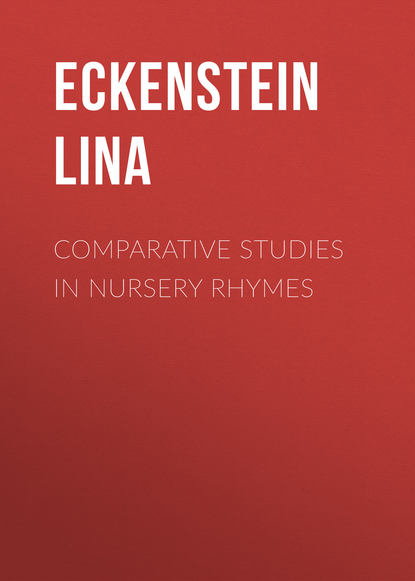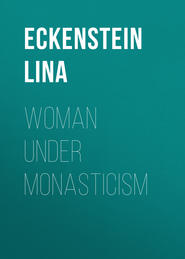По всем вопросам обращайтесь на: info@litportal.ru
(©) 2003-2024.
✖
Comparative Studies in Nursery Rhymes
Настройки чтения
Размер шрифта
Высота строк
Поля
(1842, p. 6.)
It further introduces dog – staff – fire – water – ox – butcher – angel of death – Holy One.
The Hebrew chant of the kid was printed in Venice as far back as 1609, and was made the subject of the learned Latin dissertation De Haedo by Probst von der Hardt in 1727 (R., p. 153). It was again discussed by P. N. Leberecht in 1731.[51 - The article by Leberecht is in Der Christliche Reformator, Leipzig, 1731, XVII, 28.] The chant forms part of the Jewish liturgy, and is still recited in the original Hebrew or in the vernacular as part of a religious ceremonial at Easter. Opinions on the origin and the meaning of the chant differ. One learned rabbi interpreted it as setting forth how each power in creation is kept within bounds by a power that stands above it. It teaches how he who goes wrong is at the mercy of one stronger than himself. But according to another interpretation the Father who bought the kid was Jehovah himself, the kid was the Hebrew, the cat represented the Assyrians, the dog the Babylonians, and so forth; and the whole poem described the position of the Jews at the time of the Crusades.
The Hebrew chant and its relation to The Old Woman and her Pig engaged the attention of Professor Tylor, who remarked on the solemn ending of the Hebrew chant, which according to him may incline us to think that we really have before us this composition in something like its first form. "If so," he says, "then it follows that our familiar tale of the Old Woman who couldn't get the kid (or pig) over the stile, must be considered as a broken-down adaptation of this old Jewish poem."[52 - Tylor, E. B., Primitive Culture, II, 86.]
But the tale of the Old Woman taken in conjunction with This is the House that Jack built and its numerous foreign parallels, shows that these sequences of relative powers, far from being broken-down adaptations, are at least as meaningful as the Hebrew chant. For the underlying conception in all cases is that a spell has fallen on an object which man is appropriating to his use. The spell extends to everything, be it man or beast, that comes within the range of its influence, and the unmaking of the spell necessitates going back step by step to the point at which it originated.
Halliwell compared a piece current in Denmark with This is the House that Jack built: —
Der har du det haus som Jacob bygde.
"Here hast thou the house that Jacob built."[53 - Halliwell, 1849, p. 6, citing Thiele, II, 3, 146. I cannot find this book.]
Many other versions of this tale are current in Germany and Scandinavia. In them it is sometimes a question of a house, sometimes of corn, oftenest of cutting oats or of garnering pears. The cumulative form is throughout adhered to. One German piece called Ist alles verlorn, "all is lost," begins: —
Es kam eine Maus gegangen
In unser Kornehaŭs,
Die nahm das Korn gefangen,
In ŭnserm Kornehaŭs.
Die Maus das Korn,
Ist alles verlorn
In ŭnserm Kornehaŭs.
(Sim., p. 256.)
"There came a mouse into our corn-house, she seized the corn in our corn-house. The mouse, the corn, now all is lost in our corn-house."
The other powers are rat, cat, fox, wolf, bear, man, maid. This piece, like This is the House that Jack built, ends abruptly.
Among the less primitive variations of the tale is one recorded in Sonneberg (S., p. 102), and another in the north of France, which both substitute the name of Peter for that of Jack, that is a Christian name for a heathen one. In France the piece is called La Mouche, literally "the fly," but its contents indicate that not mouche but the Latin mus (mouse) was originally meant. The tale departs from the usual form, and has a refrain: —
Voici la maison que Pierre a bâtie,
Il sortait un rat de sa raterie,
Qui fit rentrer la mouch' dans sa moucherie:
Rat à mouche,
Belle, belle mouche
Jamais je n'ai vu si belle mouche.
(D.B., p. 116.)
"This is the house that Peter built. A rat came out of a rat-hole, and made the fly go into the fly-hole. Rat to fly, lovely fly, never saw I so lovely a fly."
The other powers are dog, bear, man, maid, abbot, pope, devil.
The same tale is told in Austria (V., p. 113), and in Prussia (F., p. 197), where it is called Das Haus vom hölzernen Mann, "the house of the wooden Man." In Prussia it is recited as a game of forfeits. The sequence of the powers in the one version is house, door, lock, band, mouse, cat, dog, stick, fire, water, ox, butcher, devil; and in the other, house, door, lock, band, mouse, cat, huntsman.
Jack in Germany is called Jockel, Jöggeli, Jokele. The Master who sent out Jockel is mentioned already in the Gargantua of Fischart, which was published in 1575 (Chap. XXV.). The name Jack among ourselves is applied to a person or an object of peculiar serviceableness, as in Jack-of-all-trades, or boot-jack. But in Germany the expression "to send Jockel on an errand" implies that this will never get done.
In Vogtland the current nursery version of this piece begins: —
Es schickt der Herr den Gȏkel 'naus,
Er soll den Haber schneiden.
(Du., p. 35.)
"The master sent out Gokel to cut oats."
As he failed to come back, dog, fire, water, ox, butcher, hangman, devil, were sent after him.
In Swabia Jokele (Br., p. 44), and in Switzerland Joggeli, was sent to knock off pears on which a spell had fallen. The chant in Zürich has been traced back to the year 1769, and it begins: —
Es ist ein Baum im Gärtle hinne,
d' Birren wänd nüd fallen.
Do schückt de Bur de Joggeli usen
Er soll di Birren schütteln.
(R., p. 155.)
"There is a tree in the garden, its pears will not drop. The peasant sent out Joggeli to knock them off."
But the pears refused to be knocked off, and the usual sequence of powers was sent to secure them.
The tale of Jack was current in Münster in Westphalia also, where it was taken over by the Church, and annually recited at the religious procession which took place on the eve of the feast of St. Lambert, 17 September. This was done as late as the year 1810 (R., p. 155). The recitation was followed or accompanied by a dance, the purpose of which is not recorded. Perhaps the procession stood in relation to the actual garnering of pears, and the tale was recited in order to secure a good harvest. In this case not Jack, but der Jäger, "the huntsman," was dispatched to knock the pears off, and the sequence of powers included dog, stick, fire, water, calf, butcher, hangman, devil.
This adoption by the Church of the sequence of powers shows that we have to do with the remains of a heathen ritual, which found its way into a Christian celebration, as the tale of the kid found its way into the Easter celebration of the Jewish Church. In both instances the sequence of relative powers is preserved, and in both it is question of making an object secure for the use of man.
The same sequence of powers is preserved also in the traditional game that is known as Dump among ourselves (1894, I, 117; II, 419), and as Club Fist in America (N., p. 134). In this game it is also a question of building a house, and of knocking off pears. The action of the players, however, stands in no obvious relation to the words that are used. Sometimes three, sometimes a number of lads, crowd together and place their fists sideways one on the other, till they form a pile of clenched hands. The last boy, who has a fist free, knocks off the fists one by one, saying: —
(In Yorkshire) What's this? – (Answer) Dump.
(In America) What's that? – (Answer) A pear.
Take it off or I'll knock it off.
In Shropshire all sing together: —
I've built my house, I've built my wall;
I don't care where my chimneys fall.
When all the fists are knocked down, the following dialogue ensues: —
What's there? – Cheese and bread and a mouldy half-penny.
Where's my share? – I put it on the shelf, and the cat got it.
Where's the cat? – She's run nine miles through the wood.
Where's the wood? – T' fire burnt it.
Where's the fire? – T' water sleckt it.
Where's the water? – T' ox drunk it.
Where's the ox? – T' butcher killed 'em.
Where's the butcher? – Upon the church-top cracking nuts, and you may go and eat the shells; and them as speak first shall have nine nips, nine scratches, and nine boxes on the ear.
(1849, p. 128.)
Silence falls, all try not to laugh, and he who first allows a word to escape him, is punished by the others in the methods adopted by schoolboys. In the Scottish game the punishment is described as "nine nips, nine nobs, nine double douncornes, and a good blow on the back."






